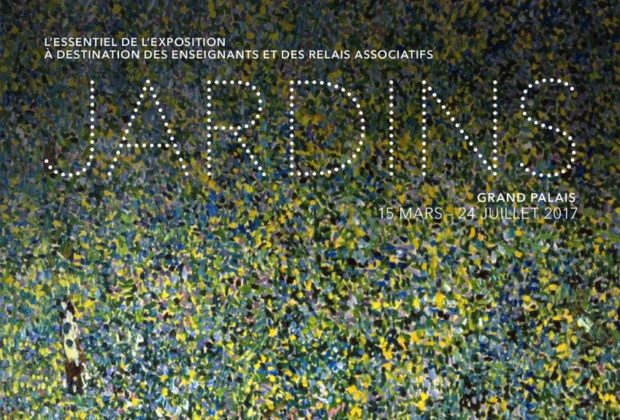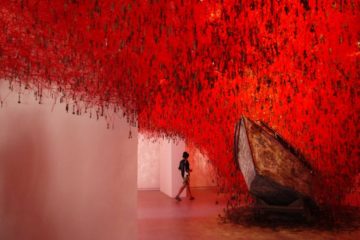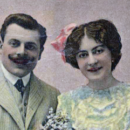
A glance over Jardins Exhibition at the Grand Palais, Paris
A sublime exhibition gracing the art of gardening through a variety of artistic media, such as painting, sculpture, photography, drawing and film, can be visited at the Grand Palais in Paris, until 24th July.
“Jardins” displays the abounding products of the botanical fascination that occurred in Europe, starting with the Renaissance era, and focuses on how the practice of gardening originated a new artistic construction. The exhibition’s selection includes also some famous names such as Dürer, Watteau, Monet, Bonnard, Klimt, Picasso, Fragonard, Matisse and Kubrick.
A garden to walk in and immensity to dream in, what more could one ask? A few flowers at his feet and above him the stars. – Victor Hugo
After a significant wait in line in order to enter the elegant palace, the visitor finds himself vanished into a labyrinth of paintings depicting ancient and modern gardens, wax sculptures, technical plans, jewelry, gardening tools and herbariums. The French passion for gardens is striking, stated by their geometric perfection, together with the artificial/natural paradox, which may suggest either the human’s triumph over nature or its incomparable majesty.
However, how does a garden fit in a museum? According to the exhibition’s brochure, both of them should be considered “places of knowledge and pleasure, to roam through at your own pace, reflecting all periods of time – long, short, the charming of the seasons or an eternity”. Though, the curators draw the attention upon the fact that nowadays, the gardens became a real political preoccupation in the occidental societies, as they turned into some kind of “refuges” for those who need a break from the ongoing and intensifying changes in the speed century.
The Renaissance is considered the turning point in the human/nature relationship, as before he became curious, the man used to regard nature as this untouched, silent witness, recalling the once lost paradise. Later on, the travels and the geographic discoveries brought to light new species, the fascination increased and in all the grand cities appeared the famous orangeries and other private gardens. The spectacular jardins of Versailles, Fontainebleau, Luxembourg or Tuileries are just some examples of the legacy France inherited from its predecessors, from a time when symmetry was valued and nature was praised due to its mystery and somehow “tamed”.
My garden is my most beautiful masterpiece. – Claude Monet
The last section of the exhibition is dedicated to the “gardener-artist”, this magician who gets the mastery of turning a deserted place into a piece of heaven. In the past, this metier was less known and prized as that of landscaper, since the gardeners were often considered uneducated. However, mastering the plants required fine horticulture knowledge, as well as a sensitive soul. Per contra, the archetype of the gardener/artist still remains the figure of Claude Monet, whose technique revolutionized both the arts and the perspectives, everything while he was working upon his “most beautiful masterpiece”, the monumental garden at Giverny.
Why you should visit “Jardins” at the Grand Palais?
Notorious works of art: Claude Monet: Nymphéas (1916-1919), Le Dejeuner (1873), Gustave Kilmt: The Park (1910), Paul Cezanne: Le Jardinier Vallier (1906), Pablo Picasso: Femme nue dans un jardin (1934), Henri Matisse: Acanthes (1953), Albrecht Durer: Violet Bouquet (XVth-XVIth centuries) etc.
Famous gardens’ plans from the XVIth until the late XIXth century.
Curious wax sculptures depicting new botanical species from the colonial lands.
Jewelry from the XIXth century by Van Cleef & Arpels and Cartier.









